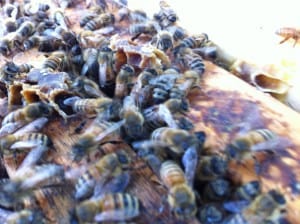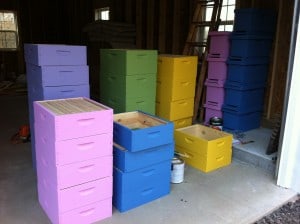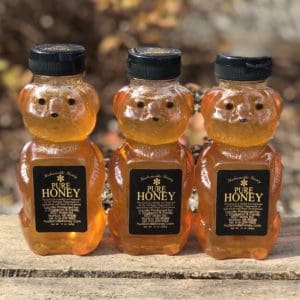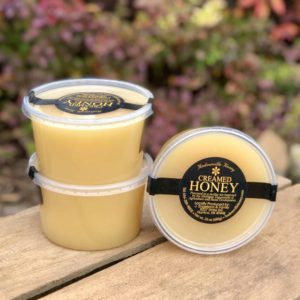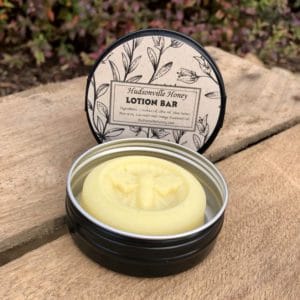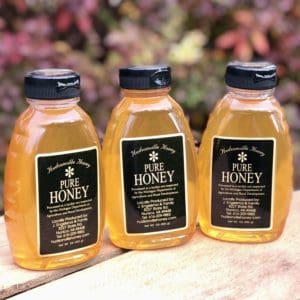Spring time is the busiest time of the year for beekeepers here in Michigan. Beginning in March we go through our apiaries and cleanup any dead outs (e.g. hives that didn’t make it through the winter.) Once again, we were fortunate this year in that we only lost approximately 10% of our colonies, not bad given the nationwide average this past winter was around 31%. We did enter the Winter with low mite counts and very heavy colonies (conditions here were really excellent for the goldenrod flow last September.) We also check to see if the bees will have enough food stored to make it to the early Spring bloom. If not, we will either feed them granulated sugar if the temperatures are still cold or 1:1 sugar syrup if the bees are getting regular flights. We also put pollen patties on them to make sure they have nutrition for the brood they are rearing.
Throughout April we monitor the weight of the hives and keep refilling feeders on lighter colonies until the first bloom starts. Once the dandelions and other early Spring bloom appears we stop feeding, as the bees are able to forage on their own. Although the timing varies based on the weather conditions, we normally split our strongest colonies in early May. This year, despite the chilly wet spring, our colonies have been building up very nicely. Most of them have almost 2 deep hive bodies full of brood and pollen. Last week we split around half of our colonies, and had planned to do the other half this weekend, but the cold rainy weather has that on hold. Instead we’re sitting on the computer typing up this article! We normally split with double screens and weight until the queenless side has ripe queen cells before we split. However this year, we have way more splits than we have equipment, so instead we split into nucs and bought a bunch of queens from Wilbanks. Assuming the introductions go well these nucs will be ready for purchase in late May, early June. If you are interested, give us a call and we’ll put you on our first-come-first-served nuc list.
We also spend a lot of time throughout the winter and spring building equipment. We rotate our frames out every 3-4 years so we need to build mountains of frames each year. This past winter we took advantage of Western Bee’s honey super sale and bought a whole skid load of medium sized supers. We’ve wood screwed all of the supers together and now the girls are in the process of painting them. We’ll be assembling/wiring frames for the foreseeable future!

